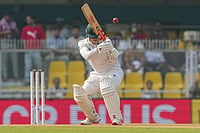For the people in the coastal belt of southwestern states, studies regarding the recurrent cyclones in the Arabian Sea do not offer anything promising. Instead, it is suggested that there would only be a rise in the frequency and duration of cyclones. According to the Indian Institute of Tropical Meteorology, the frequency, duration, and intensity of cyclones in the Arabian Sea have increased significantly. The studies also suggest that there’s a slight decrease in the frequency of cyclones in the Bay of Bengal.
“Arabian Sea used to be relatively cool, with sea surface temperatures generally below 28 degree-Celcius. Since we need warm waters above 28°C, the number and intensity of cyclones used to be less in the Arabian Sea,” Roxy Mathew Koll, a climate scientist at IITM told Outlook. “Now with rapid warming, Arabian sea temperatures are high and can support more cyclones,” he says. The number and frequency are likely to increase.
According to IITM, there is a 52 per cent increase in the number of cyclones in the Arabian Sea. Very severe cyclones have increased by 150 per cent. On the other hand, there has been an eight per cent decrease in the number of cyclones in the Bay of Bengal. For four decades, the severity is many folded – with 80 per cent increase in the total duration of cyclones in the Arabian Sea and a 260 per cent increase in the duration of very severe cyclones. The increase in cyclone activity in the Arabian Sea is tightly linked to rising ocean temperatures and increased availability of moisture under global warming.
One of the primary factors behind the extended lifespan of cyclones in the Arabian Sea is the presence of warm sea surface temperatures. The Arabian Sea experiences high sea surface temperatures throughout the year, providing an abundant source of heat and moisture for cyclone formation and intensification. The warm waters act as fuel for cyclones, enabling them to maintain their strength for an extended period.
According to Roxy Mathew Koll Sea surface temperatures in the Arabian Sea have increased rapidly during the past century, and now the temperatures are very often above the warm pool threshold. Warmer temperatures support active convection, heavy rainfall, and intense cyclones. Arabian Sea temperatures prior to cyclone formation are now 1.2–1.4°C higher in recent decades, compared to that four decades ago. This has led to an increase in the frequency and intensity of cyclones in the Arabian Sea. Extreme rainfalls (above 150 mm/day) that cause floods have also increased threefold over India, in response to Arabian Sea warming.
The rate at which the sea level is rising is also alarming, according to studies. The average rate of global sea level rise was 1.3 cm in ten years between 1900 and 1971. On the contrary, this rate increased to 1.9 cm (in ten years) between 1971 and 2001 and further increased to 3 cm per decade between 2001 and 2018. According to Roxy Mathew Koll, the sea level rise would rise 40 cm to one metre in the next 80 years considering the current scenario of carbon emissions.
“Recent cyclones like Okhi, Fani, and Amphan intensified from a weak cyclone to an extremely severe cyclone status in less than 24 hours due to exceptionally warm ocean conditions. This means that when we go to sleep, we might have a weak cyclone developing, and by the time we wake up, it might have turned into a super cyclone at our doorstep. This kind of rapid intensification gives us less time to take immediate measures for evacuation at the ground,” says Dr Roxy. Climate projections indicate that the Arabian Sea will continue warming under increased carbon emissions, resulting in more intense cyclones in the future.





















